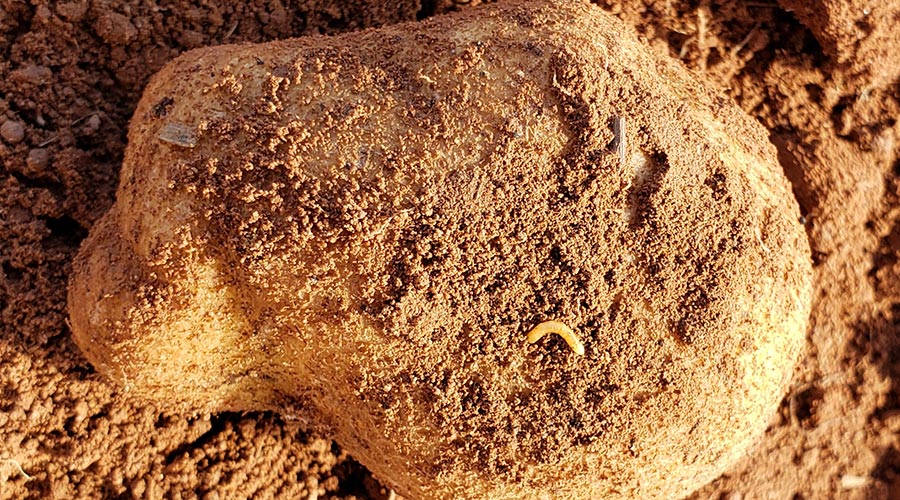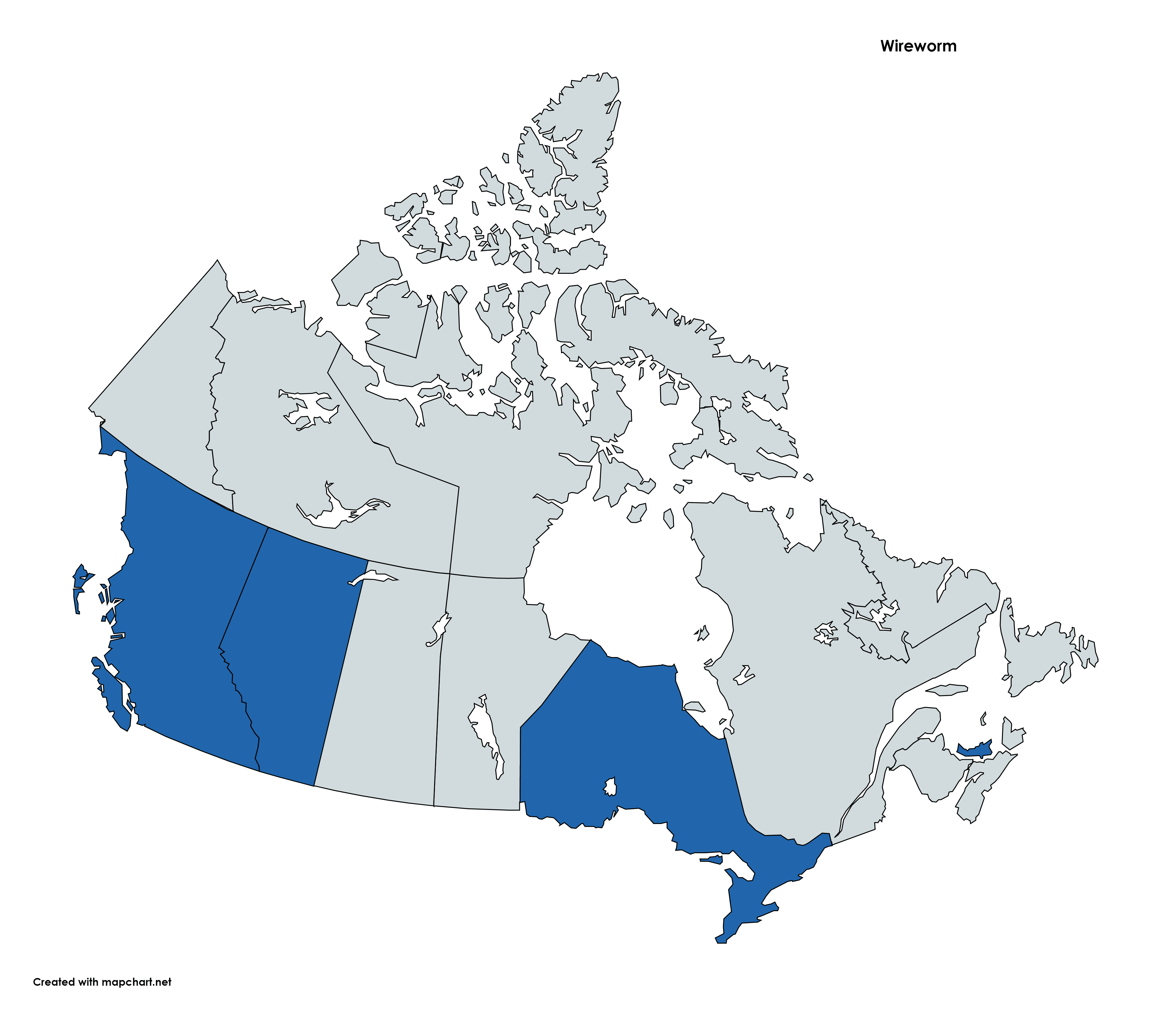
Photo credit: R. Barrett
Lead Researcher
Christine Noronha | Agriculture and Agri-Food Canada (AAFC), Charlottetown, PE
Objectives
To increase our knowledge on wireworms and develop control strategies to mitigate their impact on the potato industry through testing the efficacy of new insecticides to control wireworms and click beetles, evaluating an integrated approach to manage wireworm damage, identifying and applying novel click beetle monitoring tools and conducting surveillance of click beetle expansion in Canadian potato growing regions.
Early Outcomes of Research
- The standard wireworm treatment Thimet® 20G (phorate) continues to be effective in reducing damage to daughter tubers. Some novel experimental products including broflanilide provided a reduction in damage equivalent to or better than the current standard even under high wireworm pressure.
- Integrated management field trials were initiated in 2019. These include rotational cropping of flax, buckwheat, sorghum and sudangrass which will be followed by potatoes or respective crop. In commercial fields, trapping and removing egg laying females is being evaluated to determine effectiveness in reducing resident wireworm populations. Buckwheat included in seed mixtures at various compositions is being evaluated for growth impact on host crops and wireworm reduction. Wireworm suppressive crops buckwheat and brown mustard are being evaluated for weed suppression.
- In 2019, field trials determined the attractiveness of a pheromone to three species of click beetles. Results indicate that the compounds attracted male click beetles in the field and traps baited with these compounds collected 7 to 100 times more beetles than control traps, depending on species.
- In PE, survey results show a significant decrease in the wireworm population across the province from 2012 and 2016 levels, this decline in population could be attributed to the IPM technique used on farms.
- Larvae identified from southern Alberta were predominately Limonius californicus and from southwestern Manitoba, almost exclusively Hypnoidus bicolor. Click beetles collected throughout southern BC were predominantly obscurus and A. lineatus; and Selatosomus destructor, and H. bicolor were the predominant species from northern BC, and southern and northern AlbertaAgriotes sputator was the predominant species found in PE. Over 100,000 beetles were collected and identified and the invasive European species A. sputator has not been found in western Canada to date.
Key Messages for Growers
- New products such as broflanilide appear to successfully manage damage to potatoes, even under high pest pressure, providing protection equivalent to or better than the current industry standard.
- It appears the invasive European pest species ( obscurus and A. lineatus) have spread to northern BC and Alberta, and they have established in important farming areas of southern BC, far outside the Fraser Valley and Vancouver Island where they were first reported. Species identified from the other regions conform to the predominant pest species previously reported for those areas (e.g. Limonius canus, L. infuscatus).
- The survey in PE has shown a decrease in click beetle population, this may be related to the wide spread use of wireworm suppressive rotation crops such as brown mustard and buckwheat, for several years.

